The Article
UPGRADING YOUR TURNTABLE: Why Not Start With the Cartridge?
1st December 2016
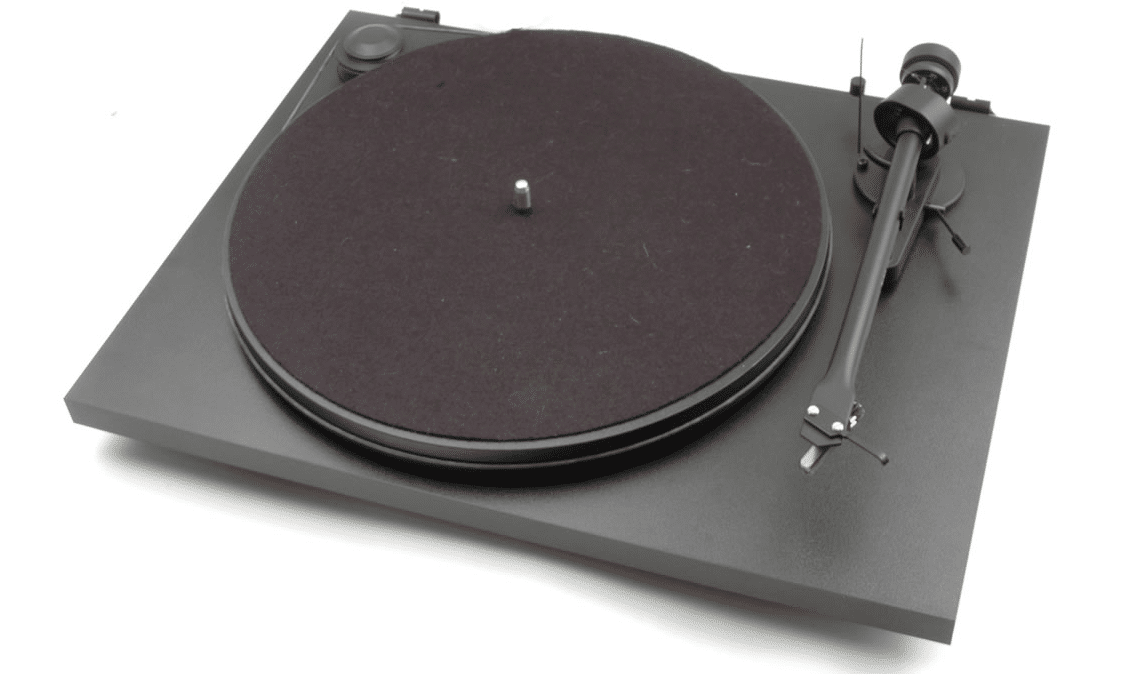
For analogue fans, says Paul Rigby, upgrading your hi-fi doesn’t have to mean replacing your turntable…well, not all of it, at any rate
The opinion might have become stronger since vinyl entered its relatively recent renaissance period but there is a school of thought that, if you want to improve the sound quality of your analogue chain, you upgrade your turntable.
This is, of course, a valid option and, for many, a perfectly reasonable plan. Improving the quality of your source will, ultimately, enhance the sound quality of your entire hi-fi. You’re also right to look at the turntable as the first and main target when looking to improve your hifi chain’s sonics. After all, this is where your music begins. Get it wrong here and no amplifier or speakers, no matter how much they cost, will help to improve fatal turntable-derived mistakes. If your turntable is producing sub-standard sound quality then your amp and speakers might change the tone here and there but that quality will not improve. So, yes, the turntable is the first port of call when looking to upgrade.
But do you actually need to change the turntable? Is there a way to enhance the quality of the sound without spending out a lot of money on a new deck? Some of us are lucky enough to do just that. Your £300 turntable not good enough? Upgrade to a £1,000 model…and then a £3,000 model…and then a £10,000 design. Lovely. If you can afford it. Trouble is, most of us have financial commitments that pull our meagre budget in 20 different directions all at once, so such a luxurious upgrade path is but a fantasy.
There are other ways and other means aren’t there? Well, yes, there are. For example, you can improve the quality of the turntable’s arm and change that. A great idea but one that can be a excessively costly and, if you’re not particularly confident in technical terms, might prove a rather daunting prospect.
How about isolation? That is, placing some vibration-absorbing sorbothane feet under the deck? Yep, good idea and one that will help the sonics and can be done very cheaply indeed. The sonic improvements will be good but can you do even better? Sound improvements that offer big bangs for the buck but don’t require a degree in engineering to complete? Hmmm, swivel your eyes over to the cartridge, hanging off the end of your turntable’s arm. It’s a prime place to begin your sonic improvements and to do so at a relatively low cost. And in two ways. Firstly, you can change that cartridge and put a better quality model in that arm. That alone will improve the sound quality all ‘round. There’s another option too, if your cartridge will allow it (and not all will), you could also possibly upgrade the actual stylus to improve the sound quality.
So, let’s give it a go and see what happens. I’m going to take a popular low-cost deck, the Pro-Ject Essentials II turntable, which arrives with a built in Ortofon OM5e cartridge (basic but of good quality) that retails for around £199. I’m then going to upgrade the cartridge and, hence, the overall sound emerging from the turntable, by replacing the cartridge with an Ortofon 2M Red cartridge for £89. Well, I hope that the sound will improve, we’ll have to see, of course. What I will do is to report the differences between the two cartridges and tell you what you get for your money.
After that, I’m going to replace the 2M Red stylus with a 2M Blue stylus (£130). This is a nice little upgrade path offered by Ortofon which means that you don’t have to buy the next cartridge model up the ladder (the 2M Blue) off the shelf for a whopping £175. As both cartridges share the same body, replacing the 2M Red’s stylus with the 2M Blue’s stylus actually transform’s that cartridge into a real, honest to goodness, 2M Blue.
IN USE
When replacing the Ortofon OM5e with the 2M Red, place the stylus guard on the OM5e before you remove the cartridge from the arm to prevent stylus damage. Remove the screws slowly and carefully and remember that, at the opposite end of each screw, is a tiny nut. Remember to catch both. Remove the nuts and the screws and put them in a secure place. Remove the four wires from the rear of the OM5e. The wires are a tight fit so be firm but gentle. Once done, with the stylus guard still attached, store this cartridge in a safe place. Remove the 2M Red from the box and push those colour-co-ordinated wires in the rear of the 2M Red. Notice that the rear of the 2M Red features colour guides to match each wire. Rest the ‘wired’ cartridge on the turnable’s platter.
Then remove the 2M Red’s screws from the box, push those through the finger lift and then into the arm. This keeps the finger lift in place. Position the 2M Red under each screw and use the supplied screwdriver to screw each into place. Note that the chassis of the 2M Red features a screw thread, so you won’t need those tiny nuts here. Tighten the screws firmly but don’t over-tighten. Re-calibrate the down force figure. This is needed because the 2M Red is a heavier cartridge.
Later, when replacing the ‘red’ stylus for the upgraded ‘blue’, make sure that the 2M Red and the replacement 2M Blue stylus both have their stylus guards fixed into position before you attempt the swop. To remove the 2M Red stylus, I placed fingernails either side of the Red stylus, at the join of the stylus and chassis, and eased the stylus off the chassis. The 2M Blue stylus easily slides and is pushed firmly into place.
SOUND QUALITY
Beginning with Ella Fitzgerald’s Sings Broadway LP and playing the track, Hernando’s Hideaway, you can hear that the 2M Red transforms the sound in just about every area. The difference is quite startling and is a revelation in terms of sonic improvements for the cost. Just in general terms, the music sounds richer and more mature. It’s this ‘grown up’ feel that seems to change the very essence of the Essential II from a simple yet efficient budget turntable to a deck with a measure of authority and depth.
Speaking of depth, the bass is now secure and visible. The OM5e found it tough to project almost any bass at all, some upper bass and lower midrange but not a great deal of the deep stuff. The 2M Red fixes the track with a sense of bass security, giving the music a new lower frequency-based rhythm.
There is also a feel that noise has been lowered because Fitzgerald’s voice has a new clarity and transparency. Most revealing is the fact that there is far more reverb around her voice, especially in the early parts of this track. The space and air surrounding her voice adds to the drama and the portentous nature of the music, adding a degree of tension before the brass kicks in.
Speaking of which, the brass offers a new focus. Before, the OM5e could be ever so slightly strident at high volumes, the brass barking slightly which didn’t do a lot for listening fatigue. The 2M Red cut that notion out right away, giving the brass a new, slightly darker presentation that added new detail.
So, a good start and, obviously, tremendous value for money. All of that for just £89?
Next up was the 2M Blue. The cartridge remained, therefore, and I reached for the 2M Blue stylus.
Once the new stylus was in place, this sonic change was interesting for a different way. The new stylus improved the sound, yes, but it also changed the sound structure. That is, the midrange now had a very smooth presentation which added a measure of elegance to the overall presentation. Giving the orchestral backing an ease and flow while the lead vocal had a slightly more romantic aspect.
Another noticeable aspect of the sound was the rise in volume. I had to lower the gain of my preamp by two notches to achieve the same volume. The 2M Blue took me closer to the action which made the sound slightly more intimate but also highlighted detail across the wide soundstage. Hence, saxophones had a sexy slurpy swing, bass had more character and the secondary percussion enjoyed enhanced precision and dropped any sense of sonic flab. So, for example, a castanet strike was now crisper.
On that same theme, another enhancement was the tonal accuracy. There was a new realism is how the instruments were presented to the ear. Drums, for the price, sounded authentic without having to be forced, the brass section had a new flow while saxophones displayed a reedy quality but in a natural, unforced manner.
CONCLUSION
I would gauge the change of cartridge, to the 2M Red and then the stylus, to the 2M Blue, as a complete success. Why? Because, with each successive upgrade, the turntable completely changed its sonic personality. Of course, such sound quality improvements are a real testament to the Essential II itself and its inherent potential. This means that, if you retain the ‘II’ and never change the default cartridge then you really are never hearing the ‘II’ in full flight and you are, in many respects never experiencing it at its very best. Further, you could also argue that you are wasting money by never pushing the II to its limits. The OM5e is a nice budget cartridge model but it actually restrains the turntable, in ultimate terms, and never lets it really fly. With the cartridge upgrades listed above, I really felt, at each step, that I was listening to a completely different and much improved turntable. Such were the sonic differences and improvements.
Next time, when you’ve had enough of the sound quality that your hi-fi is producing and you feel the need to improve matters, consider a cartridge or stylus upgrade firstly. Especially if you are limited in budget terms. You will be surprised at how much extra juice your current turntable can give you. And, even better of course, when you finally upgrade your turntable, you can take your improved cartridge with you and hit the ground running on your new deck. So your upgraded cartridge will provide even more value for money as the years roll on.
To learn more, click www.henleydesigns.co.uk
ORTOFON ANSWERS YOUR CARTRIDGE QUESTIONS
What is the lifespan of a cartridge and its stylus and which bits age quickest?
As a pick-up cartridge is a micro-mechanical device and, like all mechanical devices, they like to be used (properly). That makes it hard to say how long a cartridge will last. Their lifespan is affected most either by misuse or no use but a well set-up cartridge should provide at least 1000 hours of happy listening. After that, it all depends on the unique set-up. The part that tends to age quickest in normal use is the rubber suspension but again this part is capable of lasting a long time in a properly set-up system.
How do you slow down the ageing of both cartridge and stylus: that is, how do you best care for both?
There are two sides to cartridge care: system maintenance and cleaning.
Regular turntable set-up checks are vital, to ensure you are always running at the correct downforce and that your VTA, azimuth and anti-skate are set appropriately. If any one of these settings is out, it will affect both the sound performance and the lifespan of the cartridge. The most common setting to shift slightly over time is the cartridge downforce, so it’s important to check this. In terms of cleaning, we only recommend the use of a carbon fibre brush with your cartridge – wiping down the underside of the cantilever, toward the stylus tip, before every record is played. Cleaning solvents are not recommended, as they can cause damage to the stylus mounting cement and if any fluid gets inside the body it can cause damage to the internal workings.
The final thing to note is that you must also maintain good care of your records. Dirty records will cause damage to your cartridge.
Why does one cartridge sound better than another? What elements of the design result in improved sonics and why?
Sound quality comes from a few key factors:
- Stylus profile. This dictates how much of the record wall can be read, and therefore how much information is taken from the record. Spherical is the most basic profile we offer, while the Ortofon Replicant 100 is our most sophisticated. A stylus is also affected by whether it is ‘tipped’ or ‘nude’. A tipped stylus is mounted onto a shank, which is then mounted onto the cantilever. A nude stylus involves a whole stylus diamond being directly mounted onto the cantilever. The former adds mass, which can affect tracking ability, while the latter is the superior, preferred method.
- Cantilever. A light, rigid cantilever is able to navigate the record walls without adding any unwanted resonance to the signal generation.
- Suspension. The suspension needs to let the stylus track where it needs to go, while still maintaining a consistent contact with the cartridge’s internal generator system.
- Magnets and coils. This is where the electromagnetic induction takes place. Tightly-wound high-purity coils and strong magnets will be able to generate the cleanest signal.
Why is moving coil deemed better and moving magnet?
To create a moving coil cartridge involves more advanced manufacturing processes. Fundamentally, the way the signal is generated – by a coil moving between magnets, rather than a magnet moving between coils – allows for the electrical signal to be more consistent and responsive. This results in a fuller, more dynamic sound performance. Because of the greater ability of moving coil designs and the greater time required to make them, manufacturers then tend to also reserve the more premium components they have for moving coil products.
How do you install a cartridge? What are the common mistakes that some users make when installing a cartridge?
The most common mistake is to simply plug a cartridge in and screw it into the tonearm/headshell. In order to read a record groove as accurately as possible, the cartridge needs to be accurately aligned to the record groove, with no other forces exerted on it except the vertical downward force applied by the cartridge. To properly align a cartridge you will need a two-point cartridge alignment protractor – which are widely available across the internet. To set the VTA and azimuth (the two other most important settings), consult your turntable manual.
Are there are tweaks that you can make to improve the sound when fitting a cartridge? That is, even though you’ve installed one correctly, is there any advice on little enhancements for the ‘tweaker’ out there?
We only ever recommend following the manufacturer’s instructions. We believe it’s the system (i.e. the phono stage set-up, or the type of speakers/amplification you use) that should help you achieve the sound you want. However, there are lots of people out there who try different things with their set-up, and as with all hi-fi it is down to preference if you want to try and play.
Does it matter what arm you install a cartridge into? Is there a synchronicity between some arm and cartridge types? and voce-versa? Maybe this cartridge chassis works really well with this arm materiel, etc?
There is definitely a synchronicity. As the sound you want to achieve is entirely personal, the best thing to do is audition the arm and cartridge together to see how the combination works for you. The one technical factor to be aware of when auditioning more esoteric products is resonant frequency. This tends to be a very rare issue where the joint arm/cartridge mass is either very high or very low. When you have a problem with resonant frequency, the sound quality can be greatly affected – and all you typically need to do is consider a higher or lower compliance cartridge, depending on what the effective mass of your arm/cartridge is.
Does it matter what type of screw you use to attach the cartridge to the arm in terms of what the screw is made from and the length of the screw? Should you use a washer or not in sonic terms?
Ortofon provide precision-machined bolts with all their cartridges and we always recommend you use these. Ideally you want the cartridge directly-coupled to the tonearm, so washers should be avoided where possible.

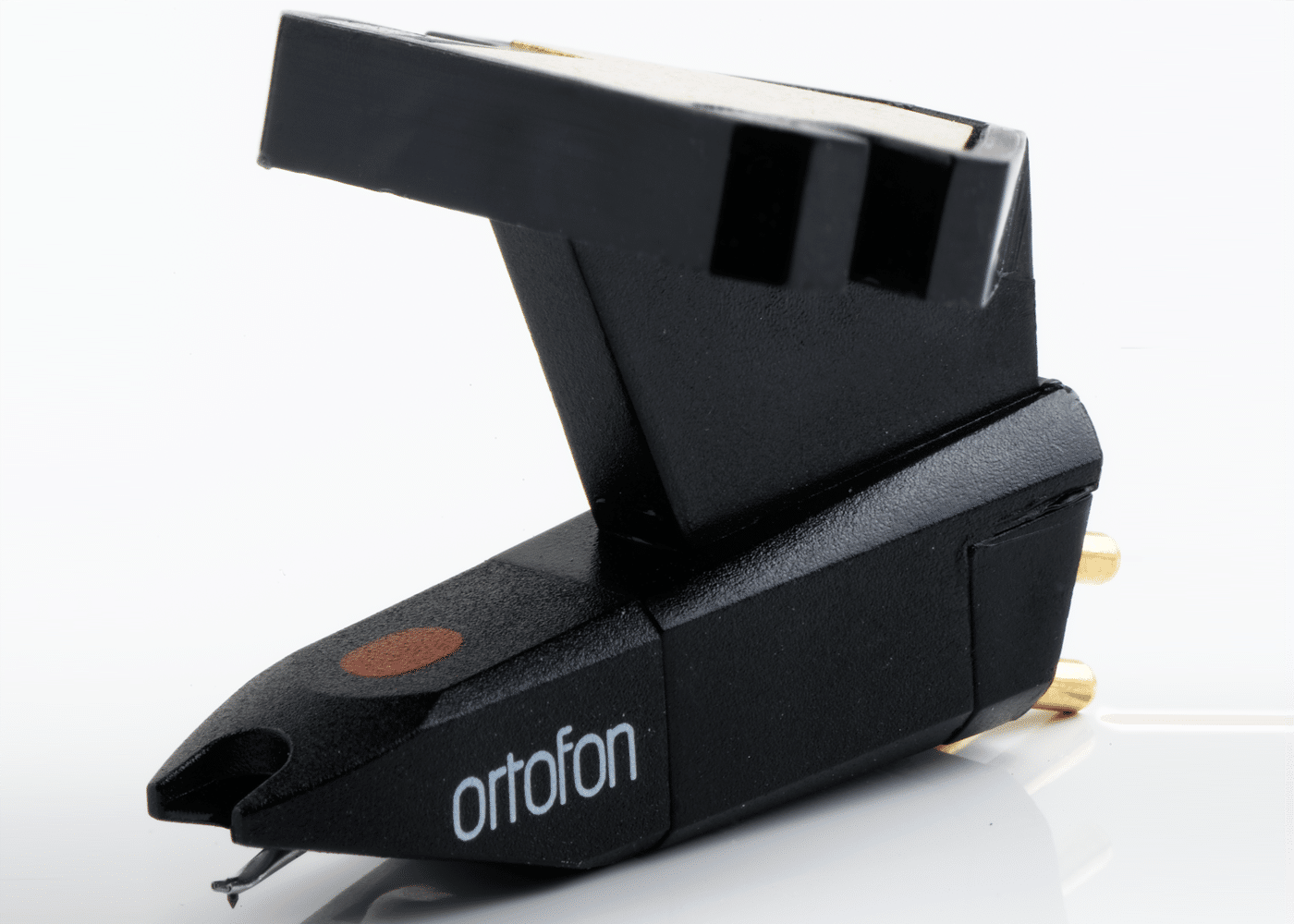
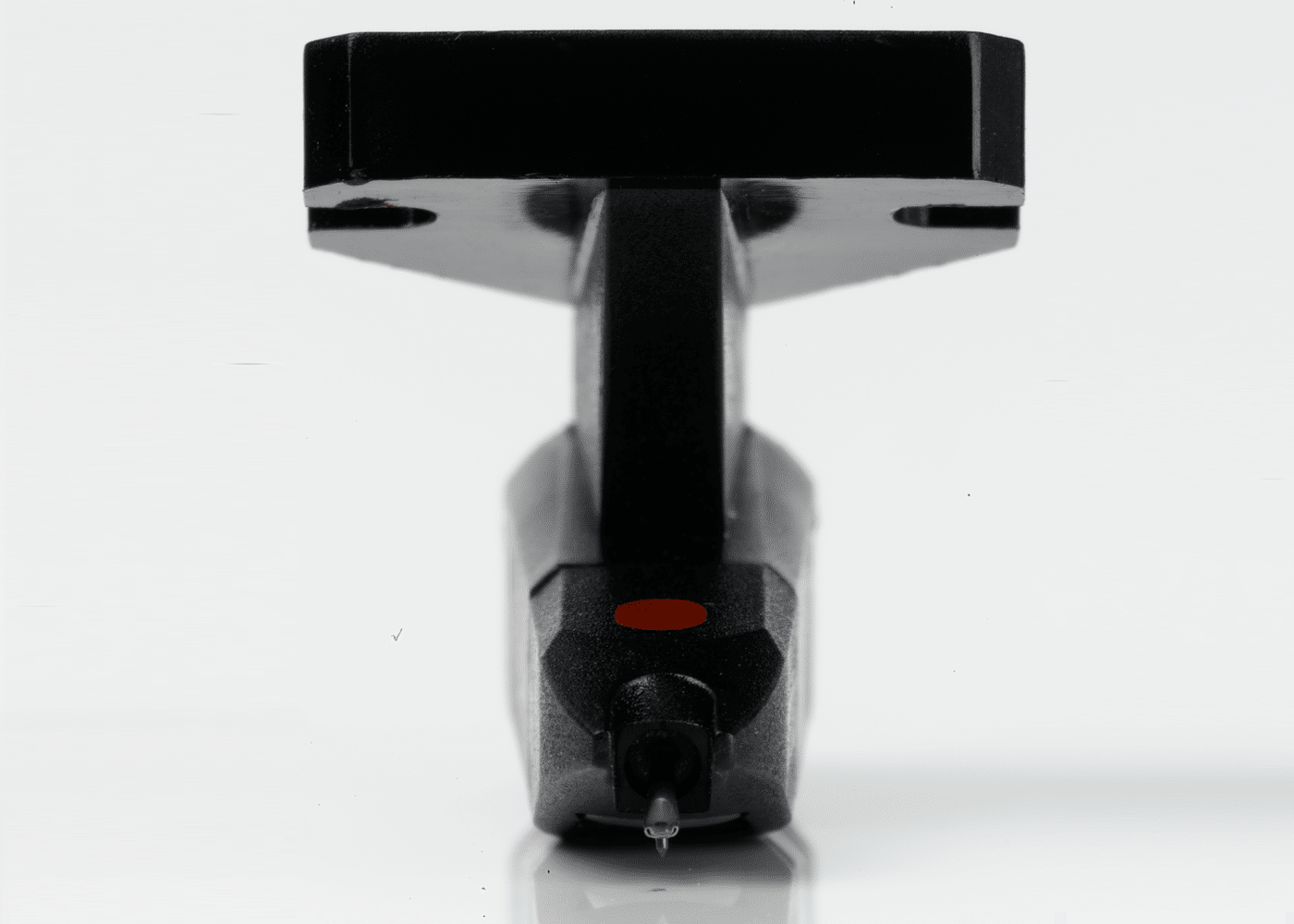
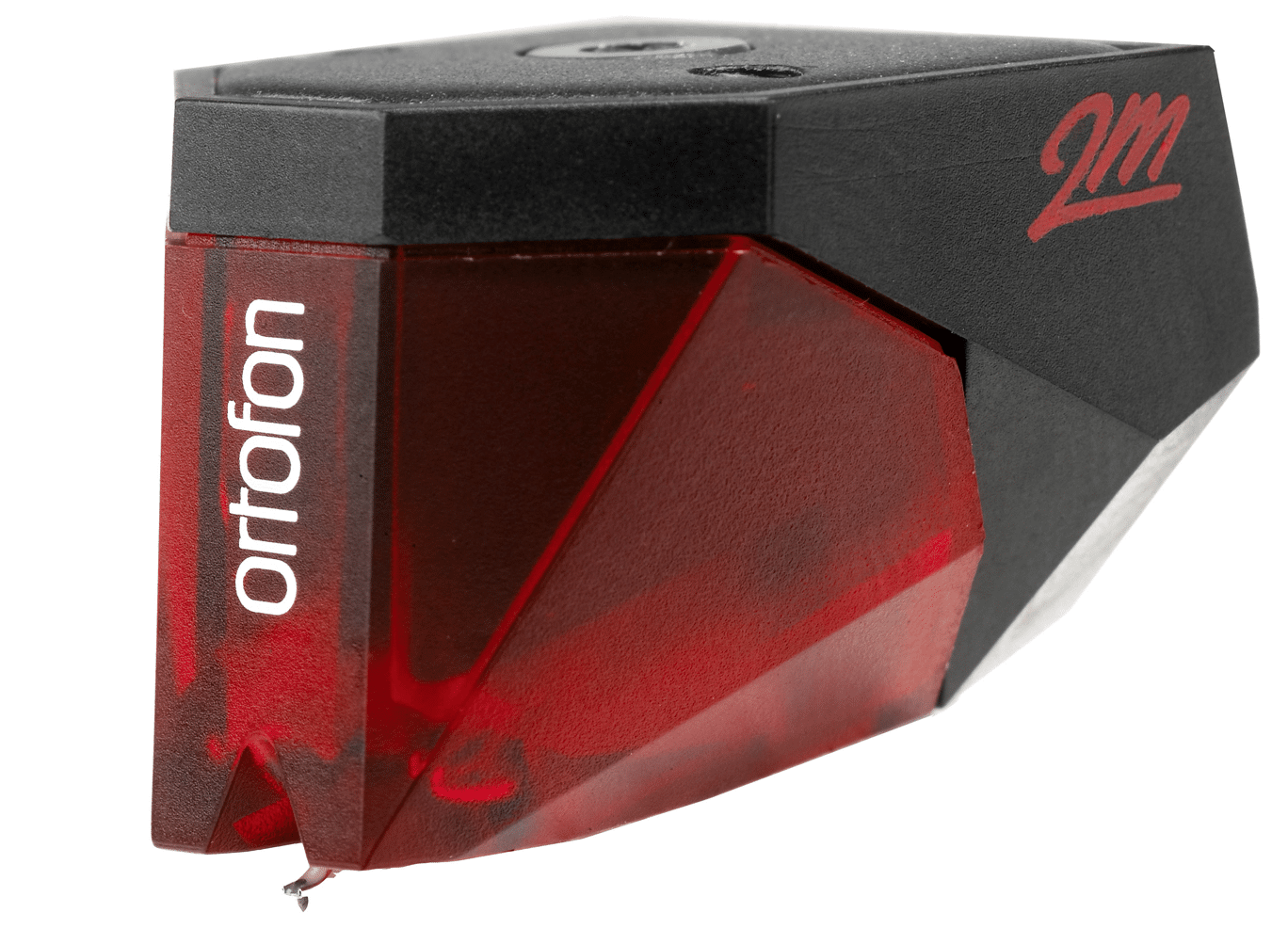
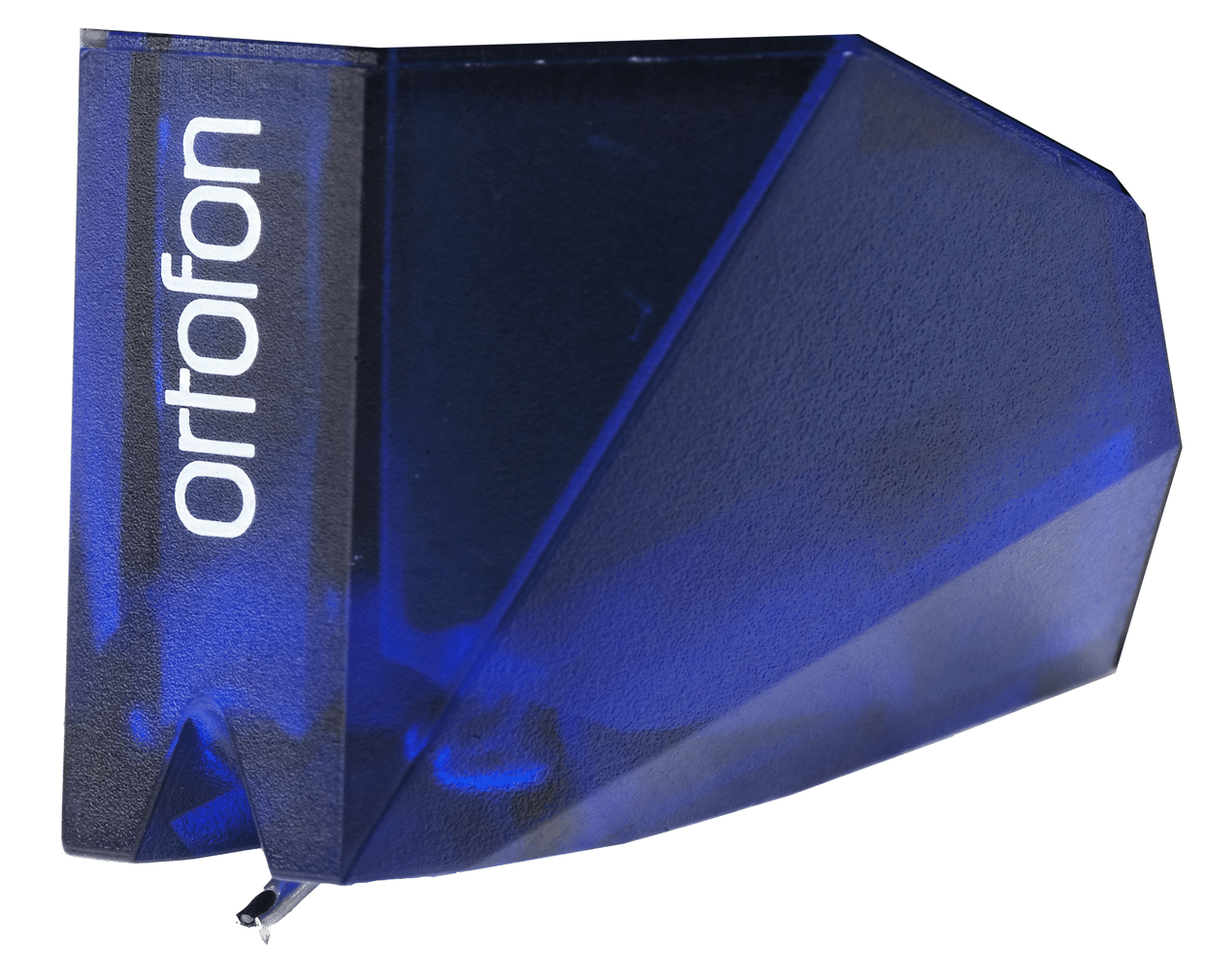
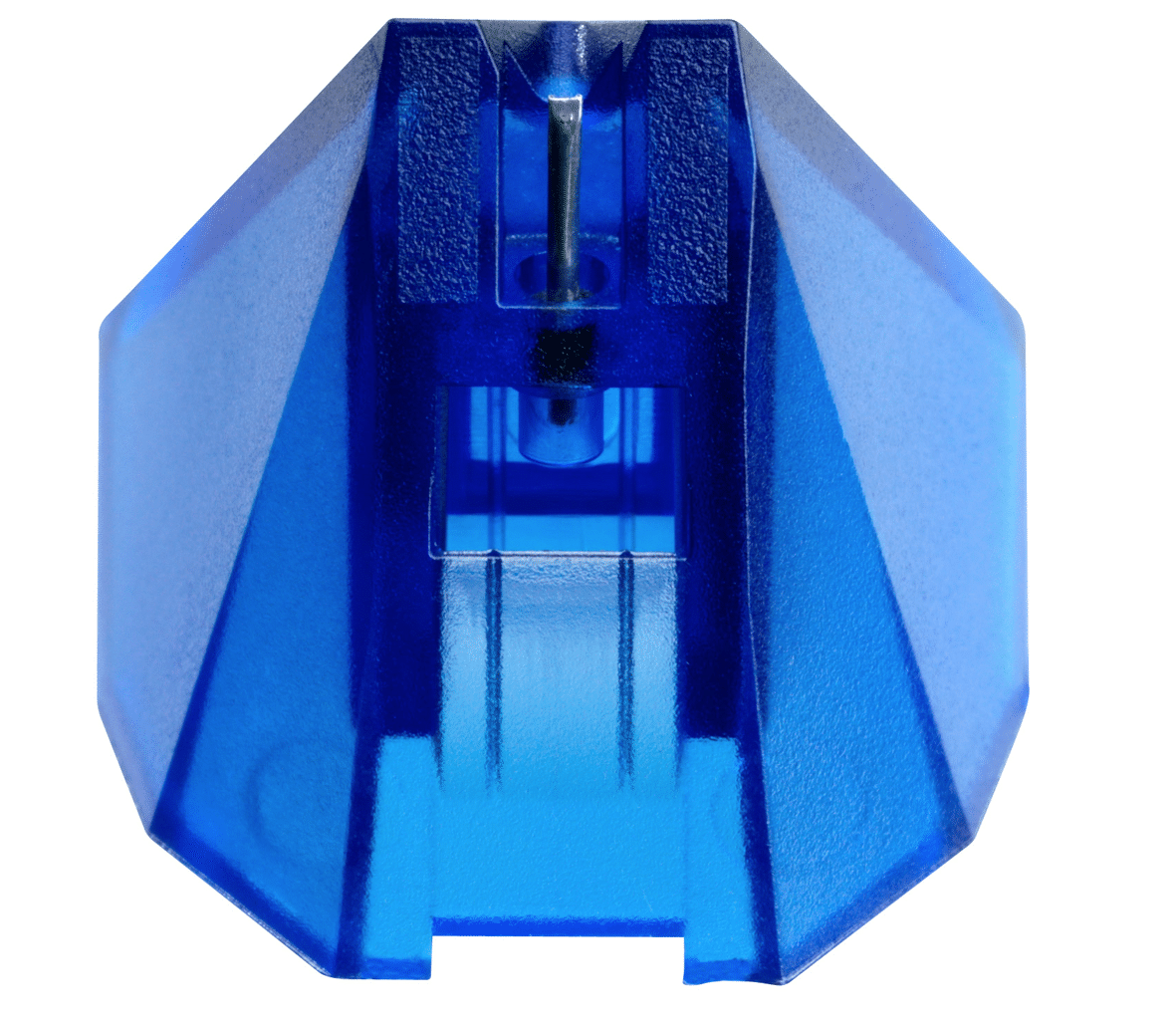



Hey Paul, really great article. Makes me wonder why I’ve been sitting on a blue 2M cart which I haven’t installed on my Pro-Ject Debut to replace the standard OM10.
Quick question if you can – will the alignment of the OM10 be the same as the 2M? I think I can do it if it’s just a straight swap. I’m scared of doing the alignment adjustments… I think that’s why I’ve waited so long.
You’ll need to re-align, Will – check out this link for a quick guide on how to do it. Comes with a link to download a free protector jig gizmo.
Thanks for your reply Paul! Ok I’ll man up and try my luck. The link didn’t attach to your comment – I guess links are disabled. Maybe if you tell me the name of the article to search? Really appreciate your help.
My fault Will – I forgot to post the link! Sorry – here it is: https://audio-technica.com.au/how-to/align-turntable-cartridge/
Perfect, got it done Paul. Thanks so much for your help.
Not a problem, Will.
Hey Paul,
I have a pro-ject 1 xpression carbon ukx turntable and it comes with an Ortofon 2M Silver (apparently a 2M Red with silver connectors?) and I was wondering whether it would be worth upgrading to a Goldring E3 or 2M Blue?
I’m just starting to learn with this stuff but found this article fascinating. Also, another question sorry, I’m using the stock RCA’s to connect to my Phono Preamp. Would you have any advice as to what RCA’s might be a good option to go from Turntable – Preamp, Preamp – Receiver?
Thanks,
Jordan
Hi Jordan – before I answer, can you tell me what phono amp are you using right now? And the amp? And any cables in your system?
Welll, it’s funny you ask, I’m looking to buy a phono amp as my previous turntable had one built in. I was looking at a Schiit Mani (although they seem impossible to get in the UK), I have an AV Receiver: Sony STRDN1050 and standard cables ( but was looking to get something better). I would get a separate Amp but I have a home theatre set up and wouldn’t maybe be able to afford a separate amp and speaker setup.
OK Jordan, in that case I’d recommend a new external phono amp to begin – maybe a Rega Fono if you can’t find a Mani. Then grab the best QED cables you can afford from Amazon. I’d leave the cartridge ‘as is’ for now.
Thanks Paul, your advice is very much appreciated. I’ll give that a go!
Glad to be of help Jordan.
Last question, I promise. I’ve decided to go for a Stereo Amplifier to make the most of my turntable, would you be able to recommend something under £500? I’d be happy with something vintage or new? I’m going to upgrade to some Q Acoustics 3020i’s fairly soon!
Hi Jordan – this one is currently on a deal…have a look: https://cambridgeaudio.com/gbr/en/products/cx/cxa60
or for a bit more, Р£599 РThe Rega Brio.
Hi Paul, I’d appreciate your advice. I have a Pro-Ject X2 which came with an Ortophon 2M silver. I had a spare blue stylus which I fitted and the overall result is very good. However I feel it could be better and I’m considering upgrading the cartridge, probably to a moving coil. The question is whjat would be the best cartridge to match with the turntable and how much should I budget for? The rest of the kit is an Arcam r-Phono, Arcam A39 FMJ amp and Kef r300 speakers with the best cable I can afford. Alternatively, should I consider upgrading the phono stage instead?
Hi Mike – I’d look at the Hana E Series MC carts. Check out this review: https://theaudiophileman.com/hana-sisters-el-eh-moving-coil-cartridges/
Thanks Paul, excellent article and sound advice. Much appreciated.
Mike
No problem Mike – good luck with the upgrade.
Hi Paul. Great article. I know the 2M Black is extra sensitive so it would be a bad choice for the Essential 2 but what about the 2M Bronze?
Would that work or should we just stick with the 2M Blue?
Thanks!
Hi Justin – I think the Bronze is overkill for the Essential 2 – I would invest the cash in a better turntable. I’d go no further than a ¬£100 or so for this turntable. A 2M Red? Even better a Goldring E3 methinks.
Thanks. But I just saw people use the Bronze on the Project Debut Carbon and I know that was a turntable only $100 more than the Essential 2 and I am kind of not looking to buy a new turntable right now. Just eventually maybe I might upgrade turntable and thinking if I should invest in a Bronze that I could eventually take off and move to a better turn table but I just don’t know if that the Bronze would even work on the Essential 2. If it doesn’t I will probably use the Blue as you did in the article.
Hi Paul, I love your website and your style.
I have a Pro-ject T1 SB turntable with an Ortofon OM5e capsule and I would like to improve its sound since some records I think could give much more of themselves. The system is completed by a Cambridge CXA61 amp and B&W 683S2 speakers.
What capsule do you think is the best for my system to give the best with my current turntable? Do you think that with a phono preamp (Pro-Ject S2 or Cambridge Duo, for example) it would also improve the sound a lot?
Thank you!
Thanks for your kind words, Narcis – a phono amp? What’s your budget?
Max 300€ or a bit more
Take a look at this: https://www.longdogaudio.com/product/lda-ph1-moving-magnet-phono-stage/
Here’s my review: https://theaudiophileman.com/ph-1-ha-1-phono-amplifier-longdog-review/
Thank you Paul, I will take a look.
And what about upgrade the turntable cartridge?. Have you a suggestion?
And what’s your budget for the cart?
Hi Paul, I think about € 100 max.
You have already seen the hifi equipment I have and I want to get the most out of it. I don’t know what you think of my idea to change the cartridge and add a phono preamp. When I listen to some records I am not happy with the sound and it is not a gratifying enough experience.
Thanks for your help.
A Goldring E3 would be a good upgrade and an external phono amp a worthy addition too.
Thank you Paul for your suggestion. Is the Goldring E3 fully compatible with my turntable (Pro-ject T1)??. I do not want to do any retouching on it because I have no experience.
Yes, it should be fine.
Thank you for your help and sorry to be annoying.
May be at first I will change the cartridge and then get de phono pre amp.
You’re not annoying, Narcis 🙂 Sure, go for the cartridge first. There’s no rush. Upgrading is supposed to be a fun thing so grab a phono amp when you’re able to. Let me know how you get on.
Hi Paul, fantastic work you do, with the reviews and advice, I’ve learnt so much in my vinyl journey just from your writings. I’ve come up against a bit of a head scratcher here tho, if you would be so kind to help. I have a project jukebox e with om5e cartridge which id like to upgrade. I read elsewhere I can easily upgrade to om10/20/30 but I’m getting a bit confused whether that’s the whole cartridge or stylus. And then I read here about the 2m red and blue being the same as the om10/20/30 but in different clothes. I have a budget of around ¬£200 for this upgrade. Should I just be looking at the 2m blue then? Can you help me along here please?
Hi Neil – you can upgrade the stylus only to upgrade the entire cartridge, if you wish. Check out this page for more info – a Stylus 20 would seem appropriate to convert it to an OM20: https://www.henleyaudio.co.uk/shop/product?Search=OMProducts&Submit=Search
And yes, you can also upgrade the entire cartridge too, if that’s what you’d like to do. Grab the OM20 if you just want a straight stylus swop and if you don’t feel confident installing a new cartridge.
A 2M Blue is very nice and recommended. Another option? If you’re happy to install a new cartridge, look at the Goldring 1006, especially if you see a possibility of upgrading your turntable in the future. In the distant future, you can upgrade the stylus on the 1006 to a 1042 standard (worth around ¬£250) later on.
Hi, thanks so much for the reply and information. Much appreciated. I feel confident changing the cartridge but when adjusting the balance and anti skate etc I become a wee bit nervous thinking about it lol, I’m very new to this and not sure at all about that. Presumably anything apart from the om20 stylus would need adjustments?
Hi Neil – you would need to have a measure of confidence when installing a new cartridge. There are YouTube guides available (I should sort one myself should I? 🙂 ) to help but, if the notion fills you with trepidation then, for now, a stylus swop might be the answer. In the meantime, I can plan to do a ‘How To…’ on installing a new cart! Hehe.
Hey, I’m defo leaning towards the om20 stylus change. Thinking of an acryl it platter aswell. The reason I’ve come to these thoughts are since picking up a graham slee solo ultra linear diamond headphone amp with psu1. The music through the speaker box 5s is decent. Mostly the sound through the headphones is quite nice and clear (although I’m sure it could be improved) but when the music gets loud or ‘busy’ I’m hearing what I’d call distortion. It’s not very defined and almost crackly. Does this make sense?